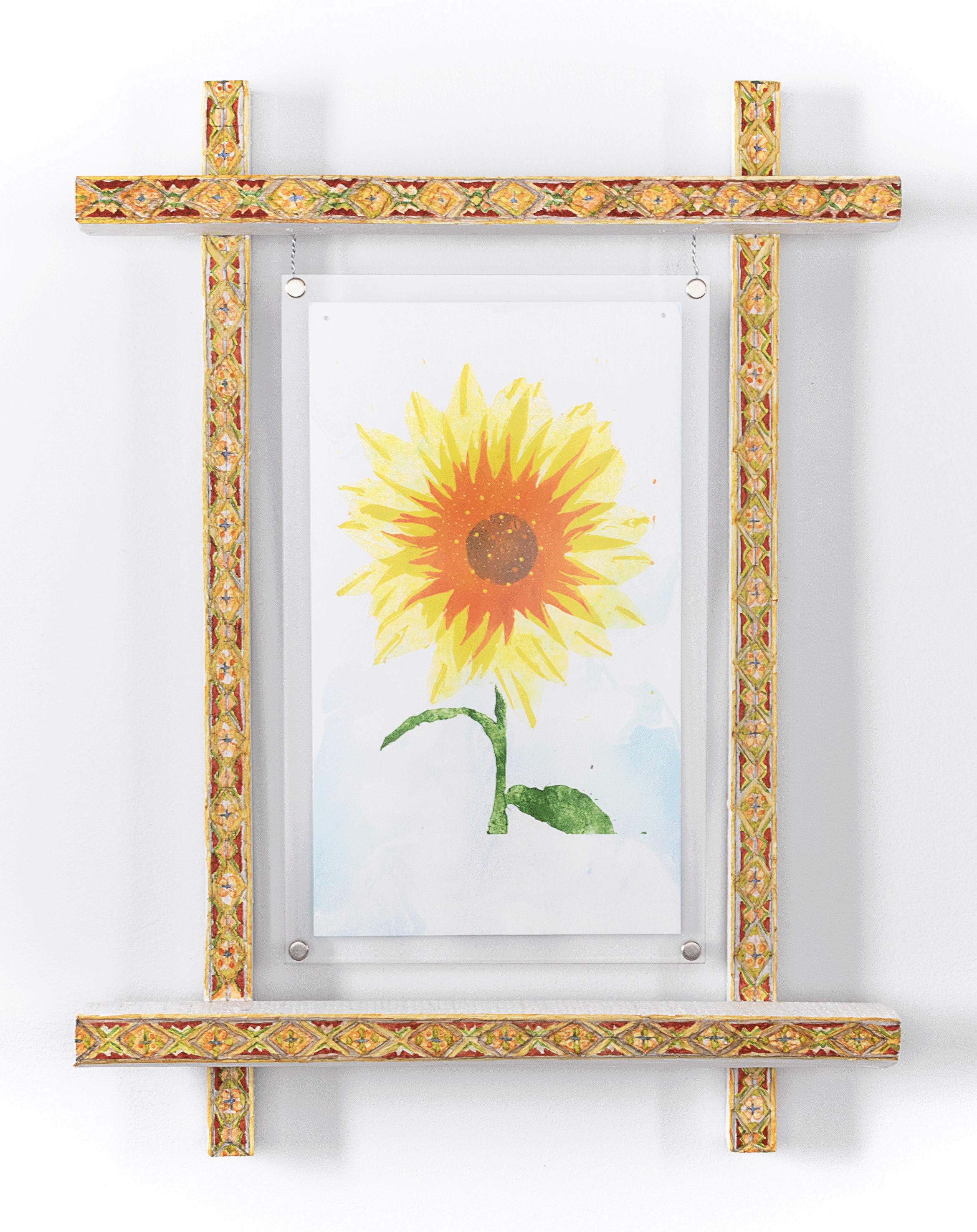Variation #2
By Sarah Nicholls
Print: Artist Proof 10/10
Frame: painted wood, vyshyvanka-inspired drawing
Ukraine is a modern nation, a language, and an ethnic group.(A,B) It is important to distinguish between the first two, which include diverse ethnic populations, and the ethnic group known as Ukrainians.
Ethnic Ukrainians are a Slavic people native to the lands of the modern Ukraine. Historically, they were predominantly agrarian, with the Cossacks—a semi-nomadic militarized group that roamed parts of the region from the 15th to 17th centuries—being a notable exception. Among Ukrainians that practice religion, the majority identify as Eastern Orthodox. Ukrainian Catholics, who follow a variation of Roman Catholicism, have also been present in the region since the Middle Ages.
As a people subjugated and divided among various empires, Ukrainian culture was often repressed by ruling elites. Nevertheless, Ukrainians managed to preserve their distinct identity through folk-based mediums such as decorative arts, vernacular architecture, music, dance and food. Here are a few notable examples.
Among traditional Ukrainian art, vyshyvanka (embroidery) is particularly popular. While vyshyvanka share common embroidery styles, the variations are nearly endless. Every region in Ukraine has its own distinct patterns, each rich in nuance and symbolism. A common thread connecting historical Ukrainian decorative art is that its value was derived less from the materials used (gemstones and gold being in short supply) and more from the beauty of their execution.
The kobzari were a uniquely Ukrainian musical phenomenon. These bards traveled from village to village, singing folksongs while accompanying themselves on a kobza or bandura (types of lutes). They were often blind. Active throughout Ukrainian lands since the 15th century, the kobzari played a vital role in keeping Ukrainian culture alive. However, the tradition was practically eradicated during the Stalinist Era, when most of the surviving performers were executed.
With nearly a quarter of the world’s most fertile soil—known as chornozem or “black earth”—located in Ukraine, food plays a significant role in Ukrainian culture. Traditional dishes tend to feature ingredients Ukrainians would have grown in their gardens: beets and other root vegetables for borscht; cabbage and onions for holubtsi (stuffed cabbage rolls); cherries and apples for varenyky (sweet dumplings). Many of these dishes were appropriated by the Soviets and labeled as “Russian”, though they are not. Chefs like Ievgen Klopotenko and Olia Hercules have been working to reclaim their Ukrainian culinary history, a task made even more urgent by Russia’s invasion.
A) For more on the modern nation of Ukraine, see Variation #17.
B) See Variation #7 for more on the Ukrainian language.
See below for further reading and background.
Ukrainian Greek Catholic Church, Encyclopedia Britannica.
Ukrainian Embroidery, Wikipedia.
Kobzars, Encyclopedia of Ukraine.
Five comfort food that define Ukraine, BBC, 24 Feb 23.
Chef Ievgen Klopotenko, Personal website.
Olia Hercules, Personal website.


